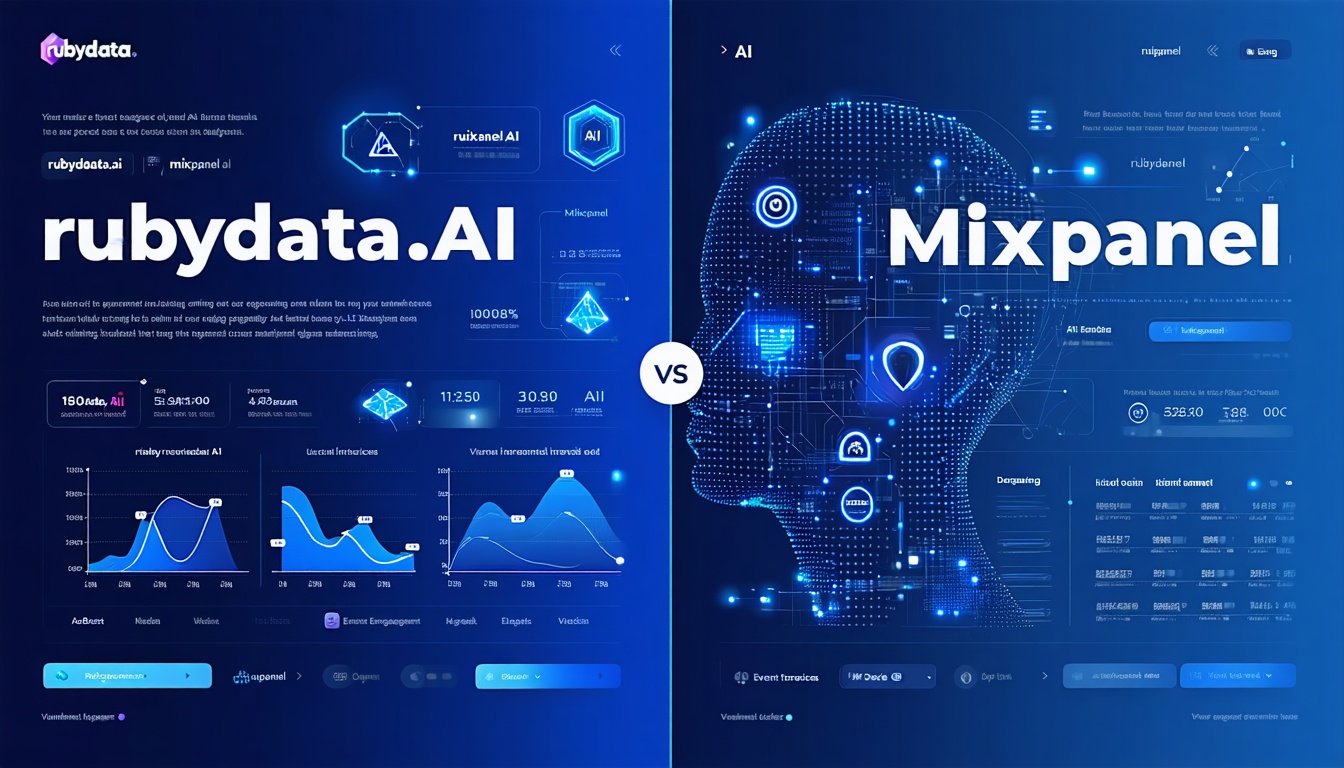RubyData.ai vs Mixpanel A Deep Dive into Predictive Analytics

Understanding Predictive Analytics
Predictive analytics continues to shape the way e-commerce businesses engage with customers, relying on data-driven insights to optimize outreach and drive conversions. When evaluating rubydata.ai vs mixpanel, marketers look for platforms that can both reveal critical user behavior and proactively recommend next steps. These approaches are especially relevant for e-commerce marketing managers seeking innovative AI-powered solutions. By combining automated intelligence with in-depth analytics, businesses can personalize content, boost loyalty, and stretch beyond the limitations of conventional marketing automation tools.
Exploring RubyData.ai’s Advantages
RubyData.ai stands out for its commitment to proactive, AI-driven personalization that examines the entire customer journey. Rather than depending on reactive, rule-based triggers, RubyData leverages advanced machine learning models to interpret user behavior patterns. Consequently, it delivers merchandisers and marketing teams customized recommendations in real time.
Proactive AI Personalization
Based on our analysis, RubyData employs predictive modeling that identifies shifts in user activity quickly. This enables fine-tuned campaigns that anticipate customer needs. Instead of waiting for a user action to trigger a canned message, the platform uses deep insights to craft timely, relevant communications.
Shopify Plugin Integration
For e-commerce leaders seeking a klaviyo alternative, RubyData’s Shopify Plugin is especially appealing. It provides seamless connectivity between ecommerce storefronts and the AI platform, turning raw interactions into actionable insights. By uniting product data, design templates, and predictive recommendations, the plugin helps merchants deliver updates that spark engagement and loyalty.
Examining Mixpanel’s Features
Mixpanel maintains a robust reputation for analytics and user-centric reporting. It often appeals to businesses looking for clearer visibility into user behavior funnels, segment analysis, and event tracking. Nevertheless, the platform’s functionality is traditionally more reactive, meaning it excels at capturing user actions and producing detailed cohort reports rather than actively predicting future behaviors.
Behavior-Focused Reporting
Mixpanel’s core advantage lies in its customizable dashboards and event-based analytics. Marketers can break down user pathways, compare segment performance, and pinpoint drop-off points in a funnel. While highly effective for retrospective insights, this feature typically requires manual setup of each funnel and event, limiting the degree of personalization at scale.
Comparing Both Platforms
To illustrate how RubyData and Mixpanel align with e-commerce objectives, the table below outlines several key features:
| Feature | RubyData.ai | Mixpanel |
|---|---|---|
| Core Approach | Proactive AI personalization | Reactive analytics and event tracking |
| Integration Strength | Native Shopify Plugin | Third-party integrations |
| Predictive Campaigns | Automated recommendations | Limited predictive capabilities |
| Reporting & Dashboards | Advanced AI insights | Manual funnel and cohort analysis |
| Ideal Use Case | AI-driven ecommerce personalization | Detailed transactional analytics |
Selecting The Right Solution
Our expertise indicates that the choice between RubyData and Mixpanel hinges on individual business goals. Businesses focused on AI-forward personalization to proactively engage customers often benefit from RubyData’s emphasis on automated decision-making. Meanwhile, companies that prioritize robust event-stream analytics and manual funnel visualization may find Mixpanel’s data-rich environment more suitable.
Nevertheless, for e-commerce marketing managers who feel confined by current platforms, RubyData’s capabilities represent a significant leap. By analyzing user signals at every step of the customer journey and suggesting optimal next actions, this platform adds depth to marketing automation strategies.
Implementing For Success
Implementing a predictive analytics platform requires a methodical approach. We recommend observing these steps to ensure a smooth transition:
- Define Objectives: Outline specific goals and KPIs such as conversion rates or average order value.
- Map Data Sources: Identify data touchpoints (e.g., Shopify transactions, on-site behavior) and integrate them cleanly.
- Configure Personalization Elements: Use available plugins or APIs to automate the flow of insights into marketing campaigns.
- Launch Gradual Pilot: Test on a small segment, collect feedback, and adjust targeting mechanisms before full rollout.
- Monitor and Refine: Track performance metrics regularly, and refine campaigns based on incoming data.
This framework promotes clarity of purpose and ensures alignment among teams, from marketing specialists to IT administrators.
Drawing Final Insights
In today’s competitive environment, e-commerce leaders strive to offer dynamic customer experiences that can adapt in real time. By contrasting RubyData’s proactive AI engine with Mixpanel’s event-tracking approach, we see two distinct paths to unlocking marketing potential. Those seeking deeper personalization across the customer journey may prefer RubyData.ai, while those leaning toward sophisticated historical and behavioral segmentation might gravitate toward Mixpanel.
Ultimately, the success of any predictive analytics initiative depends on a company’s willingness to integrate new data streams, train teams, and continually optimize workflows. With robust implementation and meticulous planning, these solutions can empower businesses to stand out, foster customer loyalty, and drive sustainable growth.
Try it for free
Try Ruby for free for 30 days and afterwards only pay per usage, risk-free.
Schedule Call
.svg)

